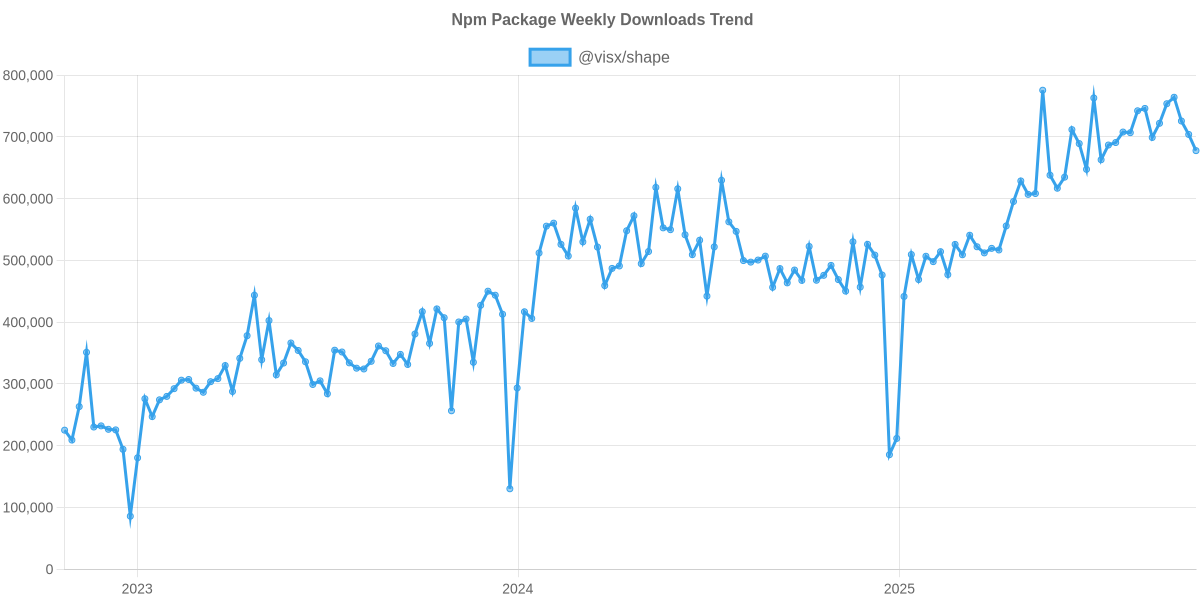visx shape
## Usage Trend [](https://npm-compare.com/@visx/shape#timeRange=THREE_YEARS)
## GitHub Stars Trend [](https://npm-compare.com/@visx/shape)
Shapes are the core elements of visx. Most of what you see on the screen, like lines, bars, and areas are all made with shape primitives.
visx
npm install --save @visx/shape